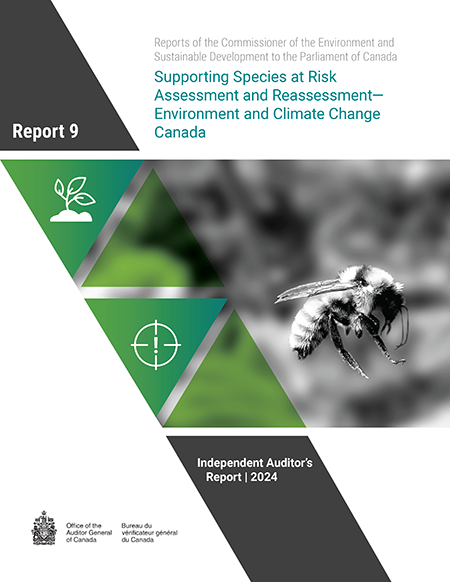2024 Reports 6 to 10 of the Commissioner of the Environment and Sustainable Development to the Parliament of Canada
Report 9—Supporting Species at Risk Assessment and Reassessment—Environment and Climate Change Canada
Key facts and findings
- Canada is home to an estimated 80,000 species, and over 5,000 species are potentially at risk at the national level. The Committee on the Status of Endangered Wildlife in Canada has prioritized over 1,000 species for status assessments.
- Environment and Climate Change Canada reduced the number of species status assessments and reassessments it planned to support annually, from 80 in 2021–22 to 75 in 2022–23 and to 60 in 2023–24. In all cases, these targets were not met.
- The backlog of species needing reassessment will grow from 389 to 574 by the end of 2030 at the current target.
- If species are not reassessed within the 10‑year time frame required under the Species at Risk Act, Canadians and parliamentarians may not know whether a species’ status has improved, remained the same, or declined and whether recovery actions for a species may need to change or funding be reallocated to other species in need.
Why we did this audit
- There is an acknowledged global biodiversity crisis, if species status assessments do not take place, species may not be considered for protection or recovery actions under the act and could disappear.
- A 2024 Policy Horizons Canada report identified biodiversity loss and ecosystem collapse as one of the most likely and high‑impact events that could disrupt Canadian society in the next decade.
- More than 300 Canadian species do not exist anywhere else in the world.
- Reassessments allow Canadians and parliamentarians to understand whether Canada’s efforts to recover species at risk are working or whether species are continuing to decline.
Highlights of our recommendations
- As the critical first step to prevent extinction and extirpation of species at risk in Canada, Environment and Climate Change Canada should
- determine the appropriate annual targets for species status assessments, given the urgency of the biodiversity crisis and the need to meet Canada’s international commitments
- provide the support required for the Committee on the Status of Endangered Wildlife in Canada to achieve those targets
- To improve Canadians’ understanding of the status of species at risk, Environment and Climate Change Canada should develop and implement a plan to support the Committee on the Status of Endangered Wildlife in Canada to eliminate in a timely way the backlog of species requiring review of classification and to prevent its future growth.
Please see the Link opens a PDF file in a new browser windowfull report to read our complete findings, analysis, recommendations and the audited organizations’ responses.
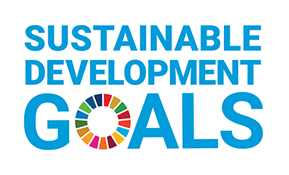

Canada has committed internationally to protect and prevent the extinction of species at risk. In 2015, Canada adopted the United Nations’ 2030 Agenda for Sustainable Development, which included Sustainable Development Goal 15, which aims to halt biodiversity loss. In 2022, Canada signed the Kunming Montreal Global Biodiversity Framework, which commits to taking urgent action to halt and reverse biodiversity loss by 2030. Environment and Climate Change Canada has also been involved in setting and tracking national commitments for species at risk and for biodiversity, including through the federal sustainable development strategy and related departmental strategies. To report on its international and national commitments, Canada uses information from the committee’s reassessments to describe changes in the status of species at risk over time.
Visit our Sustainable Development page to learn more about sustainable development and the Office of the Auditor General of CanadaOAG.
Exhibit highlights
Elements of the Species at Risk Act process
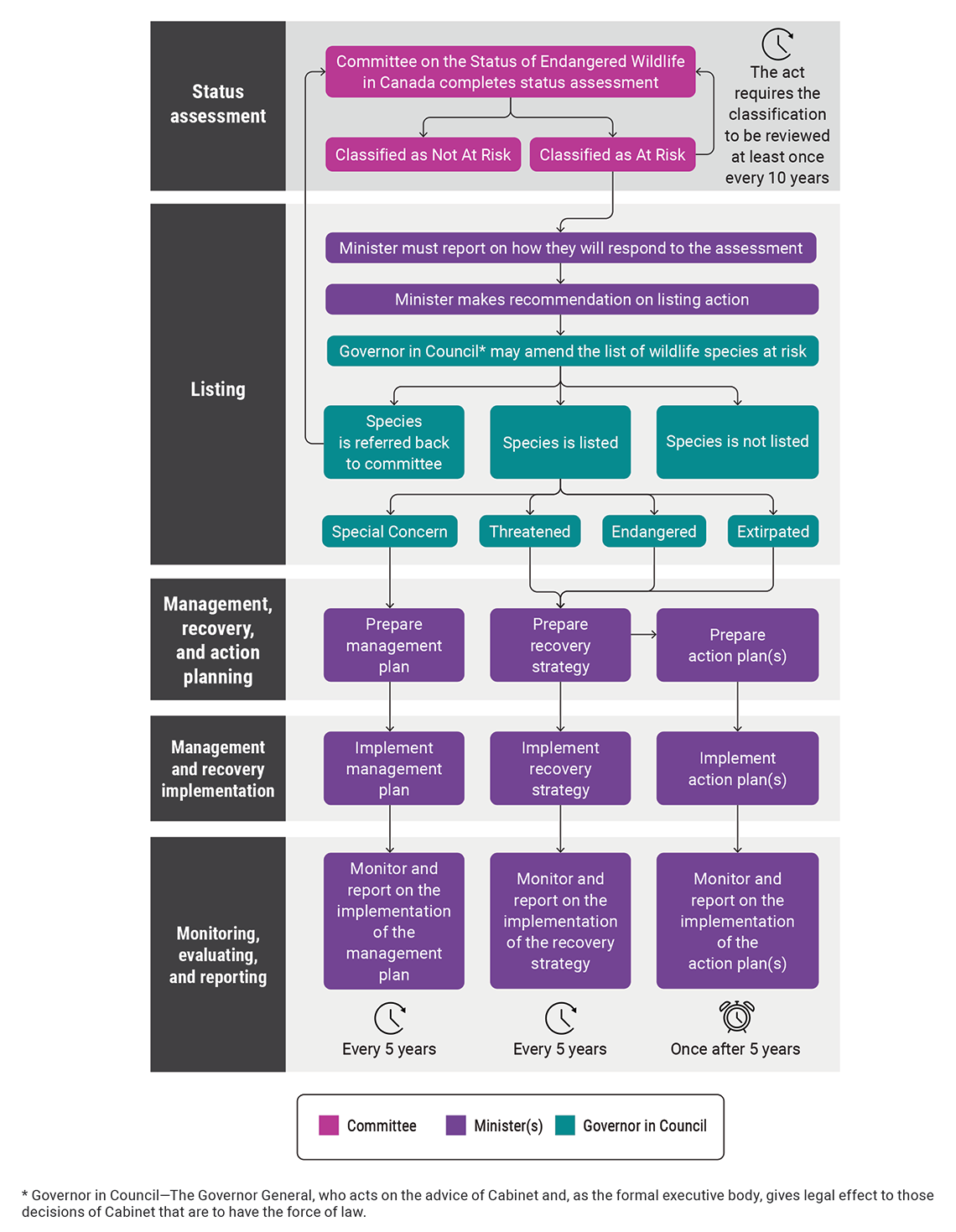
Source: Based on information from the Species at Risk Act
Text version
This flow chart shows the elements of the Species at Risk Act process. The main steps are as follows:
- status assessment
- listing
- management, recovery, and action planning
- management and recovery implementation
- monitoring, evaluating, and reporting
For the status assessment, the Committee on the Status of Endangered Wildlife in Canada completes a status assessment to classify the species as either at risk or not at risk. The act requires the classification to be reviewed at least once every 10 years.
For species classified as at risk, the minister must report on how they will respond to the assessment. Next, the minister makes a recommendation on a listing action. The Governor in Council may amend the list of wildlife species at risk. The Governor in Council is the Governor General, who acts on the advice of Cabinet and, as the formal executive body, gives legal effect to those decisions of Cabinet that are to have the force of law.
The Governor in Council can take 1 of 3 possible actions: refer the species back to committee, not list the species, or list the species.
If the species is listed, it is listed under 1 of the following 4 categories: special concern, threatened, endangered, or extirpated.
If a species is listed under “special concern,” the steps for the minister (or ministers) are as follows:
- During the management, recovery, and action planning phase, prepare a management plan.
- During the management and recovery implementation phase, implement a management plan.
- During the monitoring, evaluating, and reporting phase, monitor and report on the implementation of the management plan every 5 years.
If a species is listed under “threatened,” “endangered,” or “extirpated,” the steps for the minister (or ministers) are as follows:
- During the management, recovery, and action planning phase, prepare a recovery strategy and an action plan (or action plans).
- During the management and recovery implementation phase, implement the recovery strategy and action plan (or action plans).
- During the monitoring, evaluating, and reporting phase, monitor and report on the implementation of the recovery strategy and action plan (or action plans). A recovery strategy must be monitored and reported on every 5 years. An action plan must be monitored and reported on once after 5 years.
Some native bee species that are potentially at risk had not been assessed
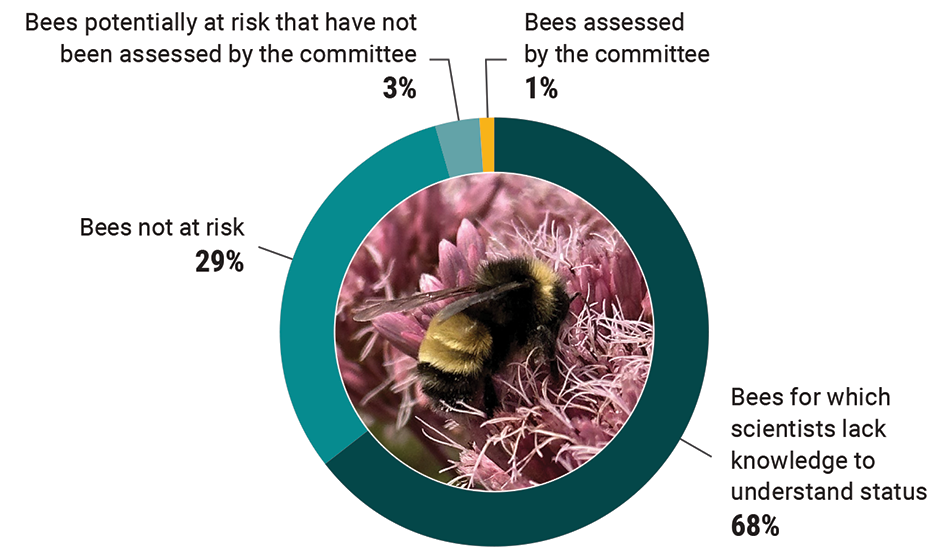
Note: Percentages do not add up to 100% due to rounding.
Source: Based on data from Environment and Climate Change Canada and Wild Species 2020: The General Status of Species in Canada, Canadian Endangered Species Conservation Council, 2022
Photo: Carrie Klassen
Text version
This donut chart shows the assessment statuses for native bee species. In the middle of the donut is a photo by Carrie Klassen of a yellow‑banded bumble bee on a pink flower.
Of the native bee species in Canada, 29% of bee species are not at risk. The committee has assessed 1% of bee species and has not assessed 3% of bee species potentially at risk. Scientists lack sufficient knowledge to understand the status of 68% of bee species.
The department’s target number for assessments and reassessments was not met for any of the years under audit
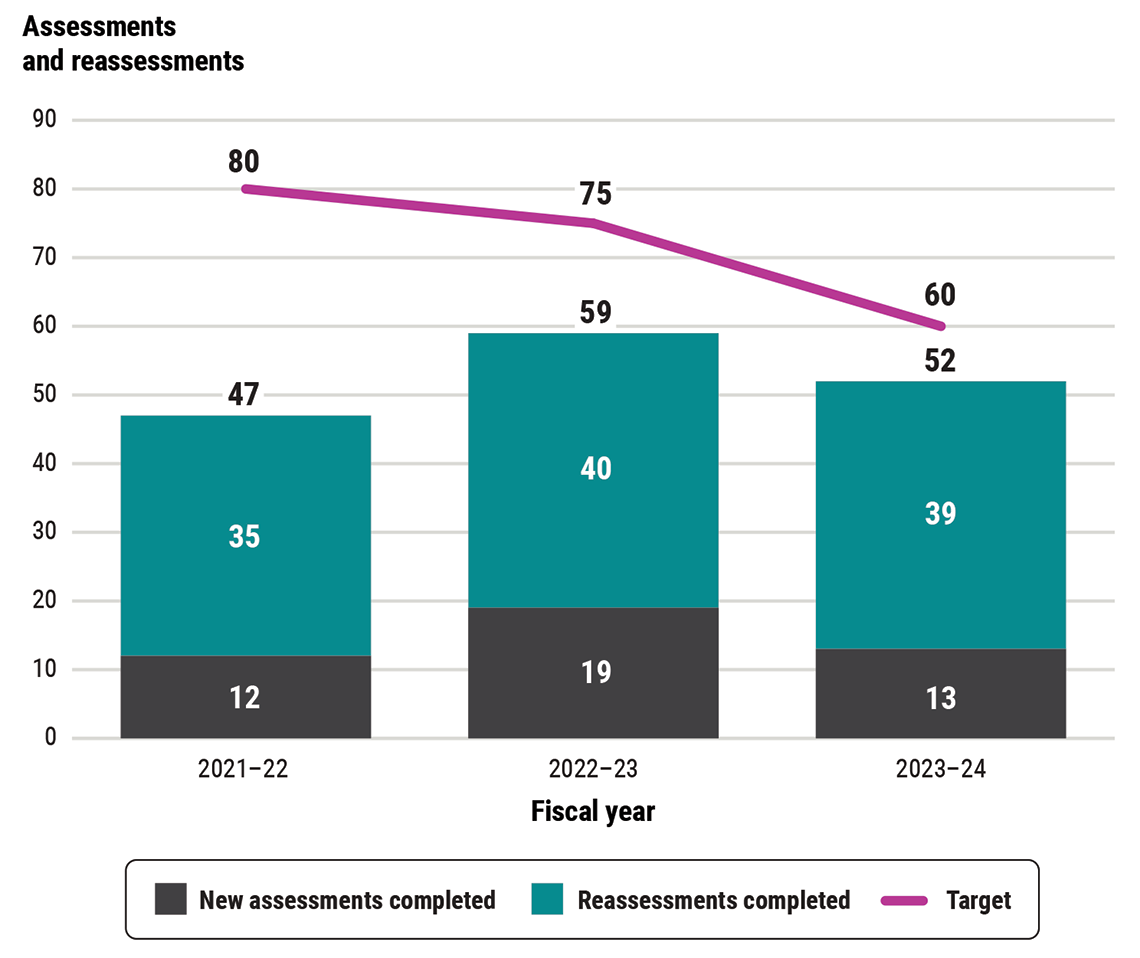
Source: Based on data from Environment and Climate Change Canada
Text version
This chart shows the target for and actual number of assessments and reassessments by fiscal year from 2021–22 to 2023–24.
In 2021–22, 12 new assessments and 35 reassessments were completed, for a total of 47 assessments and reassessments. The target was 80 assessments and reassessments.
In 2022–23, 19 new assessments and 40 reassessments were completed, for a total of 59 assessments and reassessments. The target was 75 assessments and reassessments.
In 2023–24, 13 new assessments and 39 reassessments were completed, for a total of 52 assessments and reassessments. The target was 60 assessments and reassessments.
In a status quo scenario, the backlog of reassessments will continue to grow; 106 reassessments each year would have to be supported to eliminate the current backlog by 2030
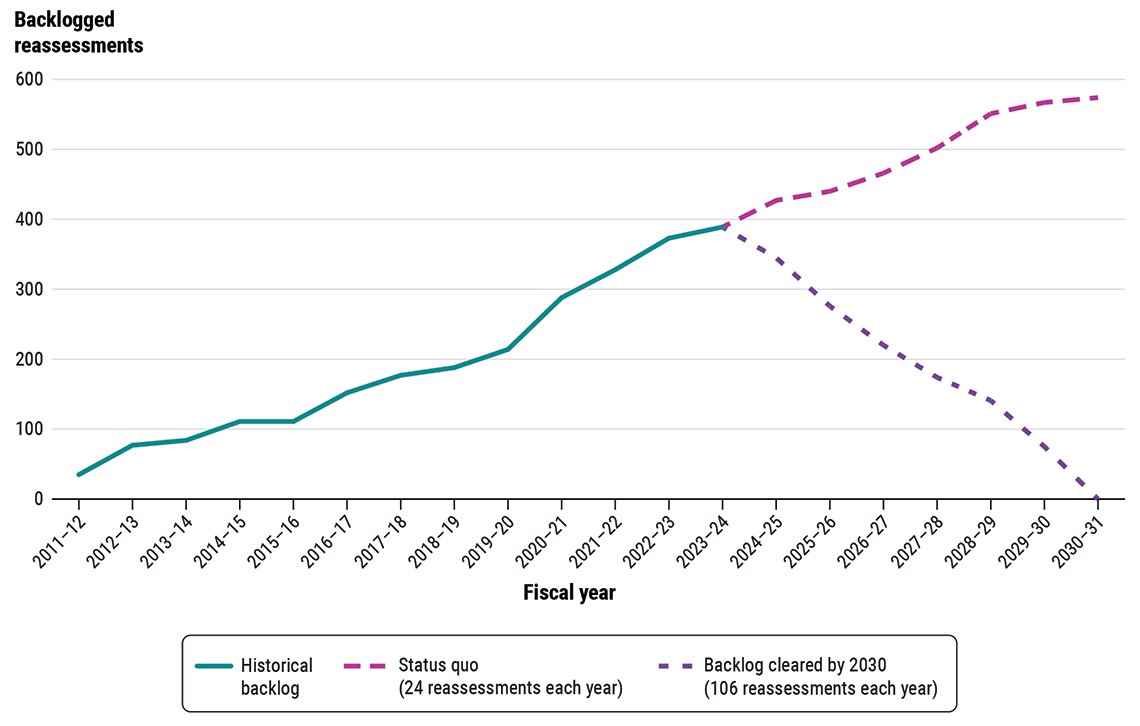
Source: Based on data from Environment and Climate Change Canada
Text version
This line graph shows the increase in the number of backlogged reassessments of species at risk from the 2011–12 to 2023–24 fiscal years. The graph then shows 2 different trajectories to the 2030–31 fiscal year:
- the projected increase to 574 of backlogged reassessments of species at risk if the status quo continues at 24 reassessments each year
- the projected decrease to 0 of backlogged reassessments of species at risk if 106 reassessments were completed each year
The historical backlog from 2011–12 to 2023–24 is as follows. In 2011–12, there were 35 backlogged reassessments of species at risk. In 2012–13, there were 77 backlogged reassessments. In 2013–14, there were 84 backlogged reassessments. In 2014–15, there were 111 backlogged reassessments. In 2015–16, there were 111 backlogged reassessments. In 2016–17, there were 152 backlogged reassessments. In 2017–18, there were 177 backlogged reassessments. In 2018–19, there were 188 backlogged reassessments. In 2019–20, there were 214 backlogged reassessments. In 2020–21, there were 288 backlogged reassessments. In 2021–22, there were 328 backlogged reassessments. In 2022–23, there were 373 backlogged reassessments. In 2023–24, there were 389 backlogged reassessments.
The projected backlog from 2024–25 to 2030–31 is as follows. In 2024–25, if the status quo (24 reassessments each year) continues, there would be 427 backlogged reassessments of species at risk. To clear the backlog by 2030 (106 reassessments each year), the number of backlogged reassessments of species at risk would drop to 345. In 2025–26, if the status quo continues, there would be 440 backlogged reassessments. To clear the backlog by 2030, the number of backlogged reassessments would drop to 276. In 2026–27, if the status quo continues, there would be 466 backlogged reassessments. To clear the backlog by 2030, the number of backlogged reassessments would drop to 220. In 2027–28, if the status quo continues, there would be 502 backlogged reassessments. To clear the backlog by 2030, the number of backlogged reassessments would drop to 174. In 2028–29, if the status quo continues, there would be 551 backlogged reassessments. To clear the backlog by 2030, the number of backlogged reassessments would drop to 141. In 2029–30, if the status quo continues, there would be 567 backlogged reassessments. To clear the backlog by 2030, the number of backlogged reassessments would drop to 75. In 2030–31, if the status quo continues, there would be 574 backlogged reassessments. To clear the backlog by 2030, the number of backlogged reassessments would drop to 0.
Infographic

Text version
Supporting Species at Risk Assessment and Reassessment
Environment and Climate Change Canada is falling short of providing the support needed to complete planned status assessments of species at risk.
Species status assessments are an essential first step to protect, manage, and recover wildlife species under the Species at Risk Act.
Assessments determine whether species are at risk.
Environment and Climate Change Canada’s obligation is to support the assessment of potential species at risk.
Canada is home to an estimated 80,000 wildlife species.
More than 5,000 species are potentially at risk at the national level.
Environment and Climate Change Canada currently limits the number of species assessments and reassessments to 60 per year.
The world is facing a biodiversity crisis. With the current limit, it will take 3 decades to assess prioritized species and over a century to assess all species potentially at risk.
Canada has committed to halting and reversing biodiversity loss by 2030.
If species status assessments do not take place, species may not be considered for protection and recovery under the act and could disappear.
Related information
Tabling date
- 7 November 2024
Related audits
- 2023 Reports of the Commissioner of the Environment and Sustainable Development
Report 2—Follow-up on the Recovery of Species at Risk - 2023 Reports of the Commissioner of the Environment and Sustainable Development
Report 3—Discretionary Powers to Protect Species at Risk - 2022 Reports of the Commissioner of the Environment and Sustainable Development
Report 7—Protecting Aquatic Species at Risk - 2022 Reports of the Commissioner of the Environment and Sustainable Development
Report 9—Departmental Progress in Implementing Sustainable Development Strategies—Species at Risk

